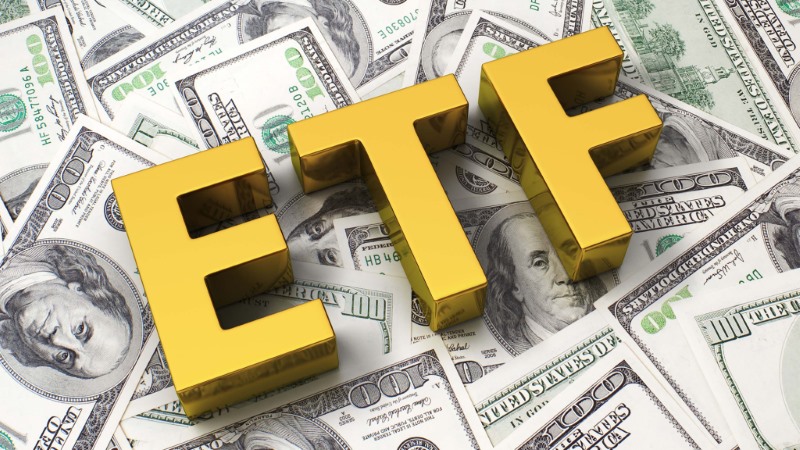Learn More Meaning of types of securities orders Basic and advanced, with real-life examples, to help you trade confidently and optimize your profits in the market.
1. Meaning of orders in stocks: Successful trading platform
The stock market is always bustling with countless attractive investment opportunities. However, to be successful, investors not only need knowledge of market analysis but also need to master trading tools, the most important of which are types of stock orders. Understanding Meaning of types of securities orders will help you control risks, close profits effectively and optimize profits.

A securities order is an instruction given by an investor to a securities company to buy or sell a specific type of security on the exchange. Securities orders play a key role in:
- Realizing investment strategy: Orders help you turn ideas into action, buying when prices are low and selling when prices are high (or vice versa, if you go short).
- Risk Management: Limit Orders and Stop Orders help you control your maximum loss.
- Take advantage of the opportunity: Market Orders help you enter the market immediately when there is volatility.
- Profit Optimization: Conditional Orders help you automate trading, take profits or cut losses according to plan.
2. Explaining orders in stocks: Classification according to many criteria
There are many ways to classify securities orders, depending on the criteria:
2.1. Classification according to the types of effective time:
- Day Order: Orders are only valid for the trading day. If not filled, the order will be automatically canceled when the market closes.
- GTC (Good-Till-Cancelled Order): The order is valid until filled or canceled by the investor. GTC orders are often used for long-term investment goals.
2.2. Classification by price level:
- Market Order (MP):
- Define: An order to buy or sell a security at the best price currently available on the market.
- Advantage: Can match orders quickly.
- Disadvantages: Matching prices may not be as expected, especially in volatile or illiquid markets.
- For example: You want to buy 100 shares of VNM. If you place an MP order, your order will be matched immediately at the lowest available sell price (if buying) or the highest available buy price (if selling).
- Limit Order (LO):
- Define: An order to buy or sell a security at a specified price or better.
- Advantage: Control the strike price.
- Disadvantages: May not be filled if market price does not reach limit price.
- For example: You want to buy 100 VNM shares at a price no higher than 100,000 VND/share. You place a LO buy order at 100,000 VND. The order will only be matched when there is a seller willing to sell at 100,000 VND or lower.
- Stop Order:
- Define: The order is triggered when the market price reaches a specified price (stop price). When the order is triggered, the stop order becomes a market order.
- Purpose: Often used to limit losses.
- Stop-Limit Order: Combines both Stop and Limit orders.
- When the market price hits the Stop price, a Limit order is triggered.
- For example: You buy VNM stock at 100,000. You don't want the stock to go below 95,000. Place a stop-loss order at 95,000. If VNM drops to 95,000, the automatic sell order is triggered and sells at the market price.
- Define: The order is triggered when the market price reaches a specified price (stop price). When the order is triggered, the stop order becomes a market order.
2.3. Classification by trading floor (HOSE, HNX, UPCOM):
- HOSE (Ho Chi Minh City Stock Exchange):
- ATO (At-The-Opening) Order: Trading orders at the opening price. Priority is given to matching before LO orders.
- ATC (At-The-Closing) order: Trading orders at closing price. Priority is given to matching before LO orders.
- MP (Market Price) Order: Market order (see description above).
- Limit Order: Limit orders (see description above).
- PLO (Post-Limit Order): Orders matched after ATC session, executed at closing price.
- HNX Trading Floor (Hanoi Stock Exchange):
- Limit Order (LO): Limit order.
- MTL (Market-To-Limit) Order: Market orders, remaining unfilled parts will be converted to LO orders.
- MOK Order (Market Order – Kill): Market orders, if not fully matched, will be canceled.
- MAK (Market Order – Match) order: Market orders, which can be filled in full or in part, the rest will be canceled.
- ATC (At-The-Closing) transaction order: Order to trade at closing price.
- PLO (Post-Limit Order): Orders matched after ATC session, executed at closing price.
- UPCOM Floor (Unlisted Securities Market):
- Limit Order (LO): Limit order.
3. Examples of stock orders: Visual illustrations
To understand better, let's consider and analyze some specific examples:
- Example 1: You want to buy 100 VIC shares at a price not exceeding VND 50,000/share. You place a LO buy order at VND 50,000. If the market price drops to VND 50,000 or lower, your order will be matched on stock exchange board. If the price does not drop to that level, the order will not be filled.

- Example 2: You are holding 200 HPG shares and want to sell immediately to make a profit. You place an MP sell order. Your order will be matched at the highest buy price available on the market.
- Example 3: You buy MWG shares at VND60,000 and want to limit your maximum loss to VND5%. You place a stop-loss order at VND57,000. If the price of MWG shares drops to VND57,000, the stop-loss order will be triggered and converted into a market order to sell the shares.
4. Meaning of orders in stocks: Importance in investment
Understanding the meaning and usage of different types of stock orders is important to:
- Make the transaction correct: Make sure you buy/sell the right type of security, quantity and price you want.
- Effective risk management: Use stop orders to limit losses.
- Profit Optimization: Use limit orders to lock in profits at a desired price.
- Trading Automation: Use conditional orders to execute trades as planned, without the need to constantly monitor the market.
5. Understanding Stock Orders: Useful Resources
To learn more about the types of stock orders, you can refer to the following sources of information:
- Websites of securities companies: Most brokerage firms have detailed instructions on order types.
- Stock courses: These courses often provide a thorough and practical understanding of stock trading.
- Books, newspapers, magazines about investment: This is a rich and diverse source of information, helping you update knowledge and experience from experts.
- Investor community: Join forums and groups on social networks to exchange and learn from other investors' experiences to master investment knowledge.

6. Securities orders in Vietnam: Important notes
- Transaction time: Each exchange has different trading hours. Please research carefully to place orders at the right time.
- Transaction Fee: Each brokerage firm has different transaction fees. Compare and choose the firm with the appropriate fee.
- Regulations on order modification and cancellation: Each exchange has its own rules for modifying and canceling orders. Please understand them to avoid mistakes.
- Price fluctuation range: HOSE, HNX and UPCOM floors have different fluctuation ranges.
Conclude
Hold on Meaning of types of securities orders is an important step for you to confidently enter the market and achieve success. HVA Group We encourage you to take the time to learn, practice and continuously learn to improve your trading skills. Wish you successful investing!











